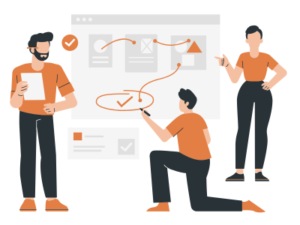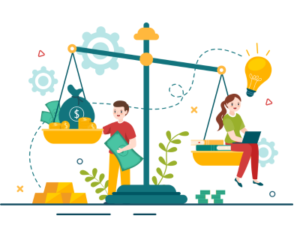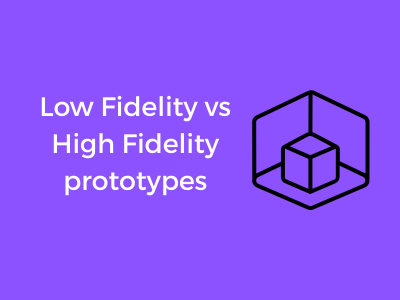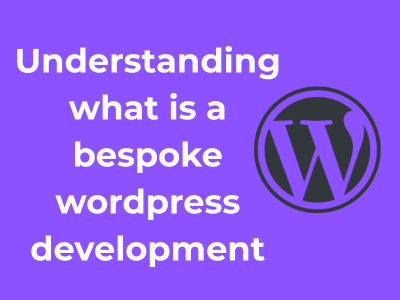Imagine you’re setting out to design a brand-new product. Before committing to the final look and functionality, you want to test the waters, right? That’s where prototypes come in — your way of visually and interactively communicating ideas before diving into development. But here’s the kicker: not all prototypes are created equal. They fall on a spectrum ranging from low fidelity to high fidelity based on their detail level, usability, and resemblance to the final product.
Low Fidelity Prototypes: Rough, but Effective
Low fidelity prototypes, often referred to as low-fi, are essentially your project’s first draft. Think scrappy, quick, and low-tech. These are the simple sketches on paper, whiteboard drawings, or rough wireframes created through basic tools. The goal? Quickly share ideas and concepts. Let me paint a picture for you: you’re brainstorming for a mobile app. Instead of diving into code, you whip up a series of hand-drawn screens to explain what each section of the app will do. Voilà — you’ve just created a low-fi prototype!
What makes low fidelity prototypes special is their accessibility. Designers, project managers, or even non-technical creatives can easily participate in their creation. Plus, they encourage feedback without anyone getting too attached to the nitty-gritty details. It’s about bouncing ideas, gauging whether the concept works, and spotting glaring issues early on.
High Fidelity Prototypes: Sophisticated Simulations
Now, when people talk about high fidelity prototypes, or hi-fi, they’re describing polished representations of products that closely mimic the real deal. These prototypes often include actual design elements, interactivity, and even realistic transitions. If low-fi is your paper sketch, think of hi-fi as your virtual reality simulation of the end product — buttons glow, animations flow, and it feels almost alive!
Here’s a fun thought: if you’re about to pitch your app to investors, would you hand them napkin sketches, or would you prefer something that looks like a fully functional app? High fidelity prototypes provide that visual wow factor. At this stage, you’re not just conveying ideas; you’re telling a story about what the finished product will be.
Key Differences You Should Know
In a nutshell, the terms “low fidelity” and “high fidelity” boil down to level of detail and purpose. To make it easier for you to wrap your head around, here’s a quick breakdown:
- Complexity: Low-fi is simple and barebones; hi-fi is highly detailed and functional.
- Time Investment: Low-fi is quick and low-cost, while hi-fi requires technical expertise and significant time.
- Audience: Low-fi works well for internal teams or early-stage discussions. Hi-fi, on the other hand, is ideal for stakeholder presentations or usability testing.
Why Do These Terms Even Matter?
You might wonder, “Why should I care whether my prototype is low or high fidelity?” Well, understanding these nuances helps you pick the right approach for the right task. For example, if you’re refining the how of your product, low-fi gets everyone on the same page quickly. But if you’re building the foundational UI and user experience, you’ll likely veer toward a high-fi prototype. By adjusting the fidelity to match your project’s needs, you’ll save time, cut costs, and speed up execution. Smart, right?
How Low Fidelity Prototypes Simplify Early Planning

When embarking on the exhilarating journey of product design, it can often feel like there’s a mountain of decisions to climb before reaching the summit of your final design. This is where low fidelity prototypes come swooping in to save the day. They’re the MVPs (Minimal Valuable Prototypes, if you will) of the early planning phase, offering simplicity, flexibility, and practicality. Ready to unpack how they work their magic? Let’s dive in!
Clarity Without the Complexity
Low fidelity prototypes, or “lo-fi” for short, are like the rough drafts in the creative process. They typically consist of hand-drawn sketches, wireframes, or basic digital renderings. Their purpose is not to stun anyone with eye-popping visuals but rather to get ideas out of your head and onto a piece of paper or screen as quickly as possible.
The beauty of low fidelity is its simplicity. By stripping away the bells and whistles, you can focus entirely on the functionality, content layout, and user flow of your design. It’s like building the foundation of a house before deciding on the paint color or the furniture. Lo-fi prototypes help teams avoid getting bogged down by unnecessary detail during these initial stages, keeping the big picture in focus.
Encourage Rapid Brainstorming
Ever heard the saying “don’t let perfect be the enemy of good”? Low fidelity prototypes embrace this mindset wholeheartedly. With their basic nature, they eliminate the pressure to “get it right” on the first go. This makes them ideal for brainstorming sessions, where creative experimentation is encouraged, and even seemingly bad ideas could spark innovative solutions.
In fact, one major benefit of low fidelity prototypes is how fast and cheap they are to create. Need to tweak a user flow or try out an alternative layout? No problem – just grab your marker, adjust the sketch, and you’re off to the races again. Because revisions are so effortless, teams can freely explore multiple ideas without hesitation.
A Gateway to Feedback
Have you ever handed someone a shiny, polished design, only to watch them hesitate to give their feedback? Low fidelity prototypes completely sidestep this awkwardness. Stakeholders and team members see the rough, unfinished look and inherently feel comfortable sharing their honest opinions or suggesting fundamental changes. After all, nothing feels set in stone yet – and that’s a good thing.
Most importantly, lo-fi prototypes offer an excellent opportunity to validate your initial ideas. Test potential workflows, confirm key functionality with your users, and ensure alignment with stakeholder expectations – all without devoting precious time to pixel-perfect design.
When to Lean on Lo-Fi Prototypes
- Exploring early concepts: Use them to align your team and find out what works before refining your vision.
- Conducting user research: Let users interact with basic layouts and collect valuable feedback on usability.
- Collaborating across teams: Share your ideas with developers, marketers, or even investors without overwhelming them with intricate designs.
Visual Precision: Why High Fidelity Prototypes Are the Real Game-Changer
When it comes to creating a design prototype that mirrors the end product as closely as possible, high fidelity prototypes take center stage. These are no longer the rough sketches of your ideas—they’re polished, interactive, and so visually precise that they may feel like the real deal. Let me tell you why they’re such a game-changer in product design!
What Sets High Fidelity Prototypes Apart?
The biggest difference between high fidelity prototypes and their low fidelity counterparts lies in their level of detail. High fidelity prototypes are essentially a sneak peek of the final product. They include:
- Refined visuals: Sleek typography, color schemes reflecting your brand, and actual imagery that closely matches the final product.
- Functional interactivity: Clickable buttons, dropdown menus, and other navigation details that mimic the product’s behavior.
- Realistic content: No dummy placeholders here! You use content that your end users are likely to see—think actual copy, product descriptions, or even sample data input.
These are not just pretty tools; high fidelity prototypes combine style with substance, offering a more immersive glimpse into the user experience.
Why Are High Fidelity Prototypes a ‘Game-Changer’?
Let’s unpack the reasons these refined prototypes can transform your design process:
- Better Decision-Making: By visualizing the end result, stakeholders can make more informed choices. For instance, does a button’s placement feel intuitive? Is the color palette on-brand and easy on the eyes?
- Spot-On Usability Testing: These prototypes are invaluable for testing. Users engage with an interface that feels real, so the feedback you gather is more accurate and actionable.
- Seamless Team Collaboration: Developers, designers, and marketers benefit from a unified vision. They see exactly what the product should look and feel like, which minimizes miscommunication.
- Securing Buy-In: Let’s face it—high fidelity prototypes are impressive. Presenting them to investors, clients, or executives can seal the deal far more effectively than a rough sketch.
When Is the Right Time to Introduce High Fidelity Prototypes?
So, should you jump straight into high fidelity? Not always. Their strength lies in the later stages of the design process. Here’s when to consider them:
- Post brainstorming: After you’ve worked out basic concepts and need something polished to refine.
- Before development: To communicate design expectations and ensure alignment across the board.
- Usability testing: When it’s time to vet the actual experience users might have.
Because they require significant time and effort, reserve high fidelity prototypes for when you’re ready to go all-in on finalizing your vision.
Comparing Costs and Time: Which Choice Fits Your Project Phase?

When diving into the world of prototypes, one critical consideration is how much time and money you want to invest. Let’s be real — no one has unlimited resources, and every project has its priorities. Comparing the costs and time commitment of low fidelity versus high fidelity prototypes helps you make intelligent decisions. Ready to break it down? Let’s go!
Low Fidelity Prototypes: The Budget and Time Saver
Low fidelity prototypes are the bread-and-butter of getting quick ideas off the ground. Think rough sketches, wireframes, or digital mockups that focus on basic interactions and layout rather than heavy details. These are your go-to option when you’re brainstorming or are still figuring out what the final product should be.
- Cost-Effective: Low fidelity prototypes hardly put a dent in your budget. You can create them with paper, simple software tools, or just a whiteboard and markers. They require minimal resources and no extensive design skills.
- Time-Sensitive: They’re quick to generate! When time is of the essence, you can draft, iterate, and revise without spending weeks fine-tuning details that might change later anyway.
- Perfect for Early Phases: The low commitment means they’re ideal for the concept and ideation stages. You’re sketching out possibilities, so why overinvest upfront?
High Fidelity Prototypes: Where Time and Costs Multiply
High fidelity prototypes, on the other hand, are sophisticated and polished. They’re interactive, look like the final product, and often mimic the end-user experience closely. Naturally, this level of quality comes with a price tag — in both time and money.
- More Expensive: High fidelity prototypes often require specialized tools, software expertise, and possibly a dedicated designer or developer. All of these can drive up development costs.
- Time-Intensive: You’ll spend significant time perfecting the details. This process includes creating stunning visuals, interactive elements, and functional flows that mimic real-world use cases. It might take weeks to complete.
- Best for Later Stages: High fidelity prototypes truly shine in later project phases, where stakeholders, developers, or clients need concrete visuals to understand or approve concepts. It’s all about presentation and accuracy here!
Choosing the Right Fit for Your Project Phase
So, how do you decide which one fits your current phase? Here’s a nifty guideline:
- Early Stages of Ideation: Stick to low fidelity prototypes. They align perfectly when you’re still brainstorming, revising, and collaborating on basic ideas.
- Development and Pre-Launch Stage: Switch to high fidelity prototypes. This is when detail matters, whether you’re presenting ideas to investors or fine-tuning the user experience for developers to work with.
Ultimately, successful project planning is all about working smarter, not harder. Recognize the tools you have at your disposal and match the prototype fidelity to the stage of your project. It’s all about balancing your goals, budget, and timeline. Believe us, you’ll thank yourself for this thoughtful choice down the line!
Bridging the Communication Gap Between Teams Using Prototypes
Let’s face it—teamwork can be tricky. Whether you’re part of a design team, a development squad, or a client-facing group, everyone brings their unique perspective to the table. That’s fantastic for creativity, but it can also lead to misunderstandings. Enter prototypes, the ultimate communication superheroes that can help align everyone effortlessly. Let’s dive into how prototypes serve as a common language and smooth out team collaboration.
Why Miscommunication Happens
Picture this: the design team crafts a sleek new interface, brimming with creative elements, only for the development team to call it “functionally impossible.” Or, the client greenlights an abstract wireframe, only to say later, “This isn’t what I had imagined!” Miscommunication isn’t just frustrating—it’s costly. Misaligned visions can delay timelines, increase costs, and hurt morale. This is where prototypes can make all the difference.
Low Fidelity Prototypes: Rapid Brainstorming for All
Think of low fidelity prototypes as rough sketches or frameworks. They’re simple, quick to create, and allow everyone to get their ideas out into the open without focusing on unnecessary details. This is particularly crucial during the initial stages when your team is brainstorming ideas or trying to figure out what’s feasible.
By sharing a simple low fidelity prototype, teams can collaborate and iterate faster. Developers can flag possible technical limitations, while clients can chime in with feedback on whether the flow aligns with their needs. It’s the perfect way to test broad concepts without getting bogged down in specifics.
High Fidelity Prototypes: A Shared Vision Comes to Life
While low fidelity prototypes are helpful for rough problem-solving, high fidelity prototypes truly bridge the gap when it’s time to iron out the finer details of a project. These are your polished, visually accurate prototypes that look and behave similarly to the final product.
The beauty of high fidelity prototypes lies in their clarity. They reduce ambiguity, ensuring every stakeholder’s expectations are aligned. Designers can showcase exactly how the final design will look, developers can test interactive elements and functionality, and clients feel reassured about the final product’s appearance. In essence, high fidelity prototypes leave little room for misunderstandings.
How Prototypes Encourage Cross-Team Synergy
- Improved Clarity: Prototypes bring abstract ideas to life, making it easier for non-technical team members to visualize the outcome.
- Interactive Feedback Loops: Whether testing a low fidelity wireframe or a high fidelity mockup, teams can share feedback in real-time, speeding up decision-making.
- Documenting Updates: As your prototype evolves based on team input, it doubles as a living document—an always up-to-date reference point for everyone involved.
- Fewer Surprises: Prototypes make sure there are no last-minute “wait, that’s not what I wanted” moments from clients or significant rewrites from your developers.
Using Prototypes to Foster Team-Client Collaboration
Prototypes aren’t just team-friendly—they’re great for external communication too. By involving clients throughout the prototyping phase, you let them see and shape the product in development rather than presenting a finished piece without prior input. It keeps clients engaged while ensuring you’re exceeding their expectations.
Practical Scenarios: When to Choose Low Fidelity vs High Fidelity
So, you’re knee-deep in a new project and staring down the colossal task of choosing the right prototype to get started. The decision between low fidelity and high fidelity can feel daunting, but have no fear—we’re here to navigate this together! Let’s dive into some practical scenarios where one might make more sense than the other. Ready? Let’s go!
1. When Low Fidelity Prototypes Steal the Show
There’s a charm in simplicity, and low fidelity prototypes really lean into that. Picture this: you’re in the idea stage, brainstorming like a champ, and pouring all your creativity into something that’s still forming. Low fidelity prototypes—which are minimalistic and often hand-drawn or basic digital mockups—are perfect for scenarios where you need speed and flexibility.
- Early Ideation and Exploration: When you want to get your ideas on paper (or screen) as quickly as they come to your head, low-fi is your friend. You’re designing rough drafts, not crafting masterpieces—yet!
- Rapid Feedback Loops: Got an idea you want feedback on? Low fidelity prototypes allow stakeholders to comment on the concept without getting distracted by colors, fonts, or pixel-perfect alignments.
- Collaboration-Friendly Environments: In team settings where iteration is key and you expect lots of changes, low fidelity prototypes reduce the “cost” of scrapping and restarting. Change is welcomed, not feared!
Think of low fidelity as the early light sketches for your masterpiece—a starting point with plenty of room for edits.
2. When It’s Time to Shine with High Fidelity
Now, imagine it’s crunch time. The client wants to see the product in all its glory, and you need to pitch your design as convincingly as possible. Enter high fidelity prototypes, with all their dazzling detail and realism. These are your go-to when precision, interactivity, and aesthetics become critical.
- Usability Testing: Users need to “feel” your product to provide meaningful feedback. High fidelity prototypes simulate the real thing, giving testers a close-to-authentic experience, whether it’s clicking through menus or navigating workflows.
- Stakeholder Presentations: If you’re selling an idea, nothing beats a polished, high-fi prototype. It’s far easier for someone to buy into your vision when it looks tangible and complete.
- Development Handoff: Developers love detail! Providing them with clear, finished designs helps eliminate guesswork so they can execute your ideas seamlessly.
Think of these as the gallery-worthy final pieces that showcase your brilliance to the world.
3. Finding a Balance: No Need to Pick One Path
The truth is, most projects move through a balance of both low and high fidelity. Begin with the basic sketches, refine as you go, and only move to high fidelity when you’re sure the foundation is solid. Why? It saves you time, headaches, and a lot of unnecessary reworking.
Here’s the deal: low fidelity for the “what,” high fidelity for the “how.” Use low-fi to explore possibilities and high-fi to solidify and sell them. It’s that simple!
Tools That Simplify Both Low and High Fidelity Prototyping
Let’s talk about the hero behind every successful prototype—the tools! Whether you’re crafting a napkin sketch in the form of a low fidelity prototype or diving into the detailed, slick visuals of a high fidelity one, the right tools can make a world of difference. So, what are these magical instruments? Take a comfy seat; we’re diving right in!
Low Fidelity Prototyping Tools
When we discuss low fidelity prototypes, we’re essentially talking about simple mockups and layouts. Think rough sketches, early concepts, and quick ideas that you want to bring to life. Here are some crowd favorites:
- Pen and Paper: Yes, going old-school still works wonders! A pen, sticky notes, and paper allow you to rapidly iterate. It’s perfect for brainstorming or group activities where participation matters more than perfection.
- Balsamiq: Known for its low fidelity vibe, Balsamiq offers a no-pressure way to create wireframes that look like hand-drawn sketches. Its simplicity encourages collaboration and idea sharing!
- Whimsical: If you’re looking for an online alternative, Whimsical is a fantastic choice. The drag-and-drop functionality and minimalistic features make this a winner for quick conceptualization.
- Google Slides or PowerPoint: Believe it or not, these common tools can be a quick and easy solution for assembling low fidelity prototypes. No fancy knowledge required—a lifesaver for the tech-averse!
High Fidelity Prototyping Tools
Now, when transitioning to high fidelity prototypes, you’re looking for tools that help you polish and add realism. This is where interactivity, visual finesse, and an accurate depiction of the end product come into play. Let’s explore:
- Adobe XD: If you want versatility, Adobe XD is a standout. This tool is all about those detailed, clickable designs with seamless animations that’ll have stakeholders swooning over the possibilities.
- Figma: Figma has become a bit of a superstar, particularly for team collaboration. It’s web-based, making real-time edits with team members across the globe a breeze. It also lets you add interactive elements for better user journeys.
- Sketch: A darling of the design world, Sketch offers high precision and is packed with plugins to tailor your design workflow just the way you like it.
- InVision: This tool bridges the gap between design and development. With clickable and interactive prototypes, it allows stakeholders to test and experience the final product without diving into code.
So, How Do You Choose the Right Tool?
It’s all about context! Are you just exploring wireframes or ideas? Lean toward tools purpose-built for low fidelity, like Balsamiq or Whimsical. Further along in your project and need a polished, interactive prototype to present to clients? That’s where tools like Figma or Adobe XD shine.
One key tip: Choose tools based on your comfort level and project needs. The flashiest tool isn’t necessarily the best one for you—it’s how effectively you can use them that counts.
The Bottom Line
At the end of the day, the perfect prototyping tools are the ones that empower you to communicate your ideas. Whether you’re a pen-and-paper traditionalist or a tech-savvy product designer with a love for Figma, the right tools will make prototyping feel like a creative adventure, not a chore.
Remember, prototyping is all about experimentation, so don’t be afraid to mix things up. After all, the best designs often come from having fun with the process!











